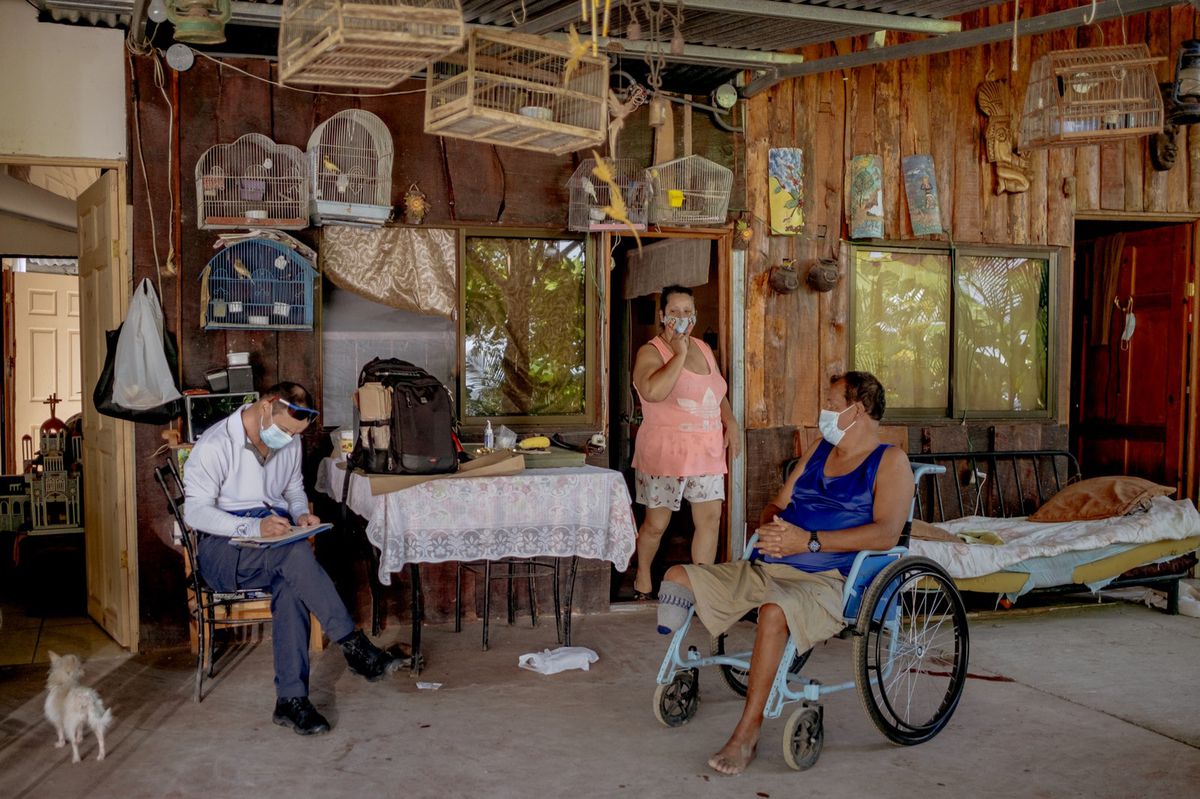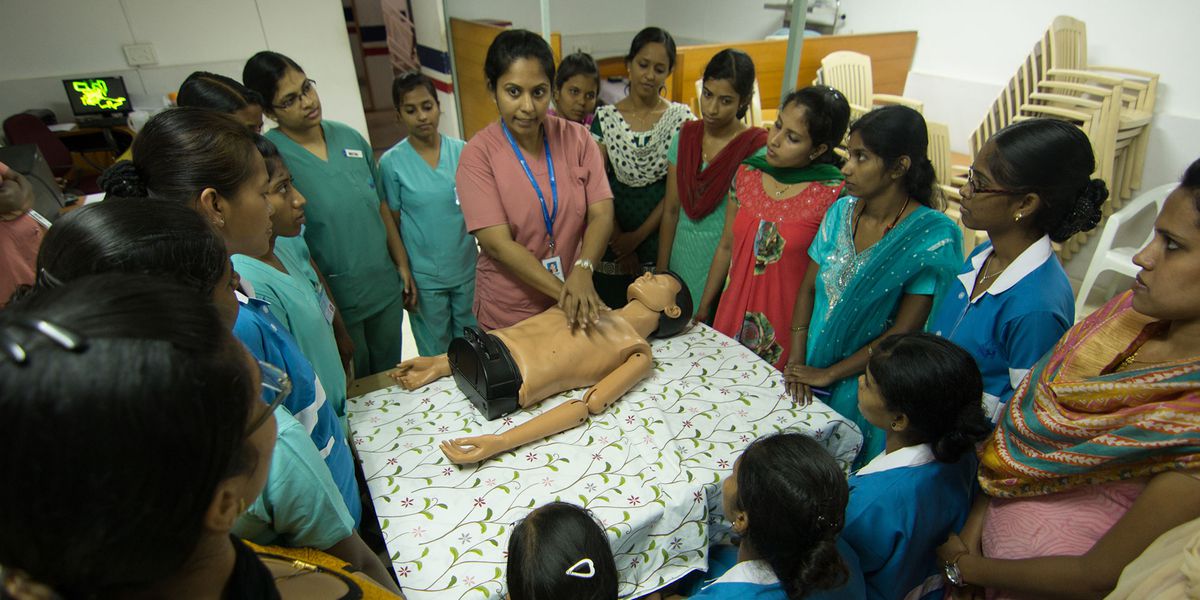👋 Welcome to Starting Early. Every other week, we spotlight new reports, useful news, engaging interviews with people doing important work in the field, and interesting takes on issues that matter.
In this week’s issue, we examine promising global healthcare models to gain insight on how they might improve health in the US. As described by Dr. James L. Madara, CEO of the American Medical Association, the US healthcare system is “extraordinarily expensive and highly inefficient.” The US spends substantially more on healthcare than other high-income countries, with worse results and less access to quality services.
In the spirit of global health, we collectively mourn the loss of Dr. Paul Farmer, who died February 21 in Rwanda. A great humanitarian and co-founder of Partners in Health, Dr. Farmer was one of the earliest advocates for global health equity and leaves behind a worldwide legacy of compassionate care and relentless activism. Through his work, Dr. Farmer saved countless lives and inspired generations of public health leaders.
Read on and click the links to go deeper.
1 big thing: The US healthcare system — poor results, high cost
The US spends nearly twice as much on healthcare than any other high-income country on average, an analysis of 10 other high-income countries found. In 2018, the US spent about 16.9% of Gross Domestic Product on healthcare; New Zealand and Australia spent the lowest at 9.3%.
The burden of high costs
Medical debt is the leading cause of bankruptcy in the US. High costs are often a barrier to obtaining necessary care: In 2021, 51% of US adults reported delaying or skipping physical, mental, and dental care in the past year.
High healthcare costs fall hardest on those without health insurance. Millions of children and families lack insurance, with children of color, undocumented children, and children in families with lower incomes most likely to be without insurance. Lack of coverage for children results in fewer clinical screenings, outpatient mental health services, and pediatric vaccinations — which can contribute to lasting harm to overall health and wellbeing.
The reality of poor outcomes
Despite high healthcare spending, the US consistently underperforms on results:
- Average US life expectancy dropped to 77.3 years in 2020, compared to 82.1 among comparable countries.
- Disability adjusted life years, which express overall disease burden as the number of years lost due to poor health, disability or early death, were 37% higher in the US in 2017.
- The US had the highest maternal mortality rate — 20.1 deaths per 100,000 live births in 2019 — among comparable countries.
Across racial lines, the situation is even worse. MIT Professor Andrea Campbell, explains: “Structural racism manifests at the individual level, with people of color suffering worse housing and exposure to toxins, less access to education and jobs, greater financial instability, poorer physical and mental health, and higher infant mortality and shorter lifespans.” Black and Hispanic Americans are more likely to be uninsured than whites and to report having poor health.
2. Community-centered healthcare in Costa Rica

A middle-income country, Costa Rica spends about $922 a year on healthcare per person, compared to $10,921 in the US. Yet, as a remarkable New Yorker article by Dr. Atul Gawande pointed out, the Central American nation has higher life expectancy — 80.3 years — than the US. Costa Rica successfully integrates public health models within private care systems to target the most preventable causes of illness and death.
Through healthcare reforms, Costa Rica also reduced maternal deaths by 80% and deaths from communicable diseases by 94%. Costa Rica’s community-centered healthcare model has 4 key elements:
- Integrating public health and primary healthcare: In 1994, responsibility for public health services and delivering medical care were put into the same agency. With this consolidation, individual and community health needs can be seamlessly identified and addressed.
- Multidisciplinary teams: Costa Rica established primary healthcare teams — equipos básicos de atención integral de salud (EBAIS) — to create a comprehensive care system. EBAIS teams consist of five people with very clear roles, from preventive care to prescribing medications to collecting epidemiological data to conducting home visits. They provide services in homes, places of worship, and other community centers to increase access to health services and build relationships with community members.
- Geographic empanelment: Costa Rica is divided into 104 Health Areas and each is assigned an average of 10 EBAIS teams. Each team serves about 3,000 clients, helping build continuity of care between providers and community members.
- Robust data collection: In addition to patient data collected at EBAIS clinics, epidemiological data is collected when technical assistants conduct home visits to engage in community outreach and improve quality of care.
Why it matters: Adopting Costa Rica’s approach to prioritizing both individual and community health — such as New Jersey’s adoption of universal newborn home visiting — could help the US address health inequities and decrease spending.
3. Looking abroad for healthcare solutions

Though social, political, and economic environments vary among countries, healthcare approaches from abroad can help address challenges faced within the US healthcare system. We profile 3 examples below.
Providing high-quality, low-cost care in India: With 31 hospitals in 19 cities, Narayana Health is one of India’s largest multispecialty hospital chains and boasts an average open-heart surgery cost of less than $2,000, a stark contrast to the US average of more than $100,000.
Lessons for the US:
- Streamline resources – Narayana concentrates specialized care and high-end technology in urban facilities and satellite facilities around the urban hubs handle routine care. Using less-expensive technology and less-specialized staff in the satellites, Narayana saves money and avoids duplicative costs, while increasing access to healthcare. The Children’s Hospital of Philadelphia took a similar approach and was able to reduce costs by 30% to 40% by shifting two routine procedures from its main facility to suburban facilities.
- Intentionally assign tasks – Narayana increases staff efficiency by shifting tasks across lower-cost workers and highly-trained specialists. For example, surgeons only perform surgical responsibilities, while other hospital staff handle preoperative preparations, charting, patient education, and related tasks. Each surgeon performs 400 to 600 procedures annually, compared to 100 to 200 in the US.
Elevating mental health in Zimbabwe: The Friendship Bench is an evidence-based model training elderly adults as community health workers (CHWs) to deliver services to those with mild-to-moderate mental health issues. CHWs are trained public health workers who are trusted members of their communities.
Lessons for the US:
- Increase availability of mental health services – Friendship Bench CHWs offer a series of six 45-minute sessions on wooden benches located in the community. After completing one-on-one talk therapy, clients can join peer-led support groups to share personal stories and engage with other community members. New York City adopted the Friendship Bench model in 2019 as part of the city’s mental health programming.
- Expand the mental health workforce –A country with over 15 million people and only 17 registered psychiatrists, Zimbabwe faces a massive gap in available mental health services. Friendship Bench closes this gap by using community members to offer basic mental health services and referring more severe cases to mental health professionals.
Providing high-quality maternal care in Sweden: The nonprofit Födelsehuset (Childbirth House) initiated a bilingual, community-based doula (CBD) project to support foreign-born women who don’t speak Swedish. Members of the communities they serve, these community doulas provide physical and emotional support to women before, during, and after giving birth.
Lessons for the US:
- Promote culturally-congruent care: In addition to addressing language barriers between pregnant women and their providers, bilingual community doulas bring a sense of understanding and familiarity. Women who reported feeling lonely and vulnerable dealing with a new language and culture while pregnant found the extra support offered by community doulas helped improve the birthing experience. Many communities in the US have successfully adopted the bilingual community-based doula model to address maternal and child health disparities, like the AMAR Community Doula Program in Trenton.
5. The roundup
Learn about the latest events, new funding opportunities, and jobs in the maternal and infant health and early childhood fields:
- Early relational health in clinical settings: Join Reach Out and Read New Jersey on February 25for a webinar on the importance of integrating early relational health and book reading during well child visits. Register here.
- Maternal health equity: Rutgers Project ECHO is launching an online educational series on maternal health innovations in New Jersey. Sessions will be on select Tuesdays, March 1to September 27. Register here.
- Addressing the needs of parents and families: Dana Suskind, pediatric surgeon, social scientist and best-selling author of Parent Nation discusses the need to support parents during the earliest years of their children’s lives. Register to join the March 1 discussion.
- Join the Burke Foundation team: We’re hiring a Program Officer to manage a new portfolio of maternal health workforce initiatives. Click here for the job description and information on how to apply.
